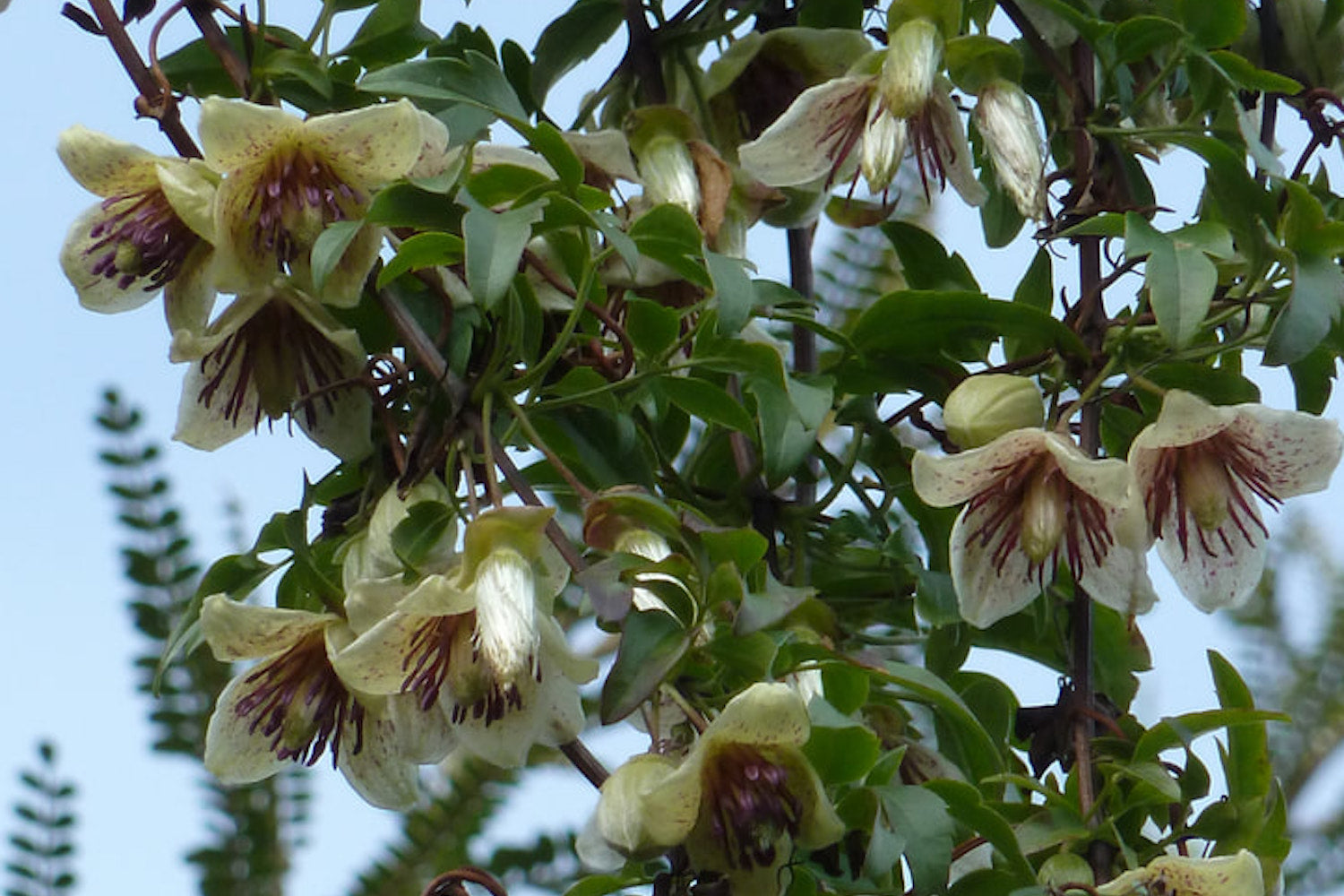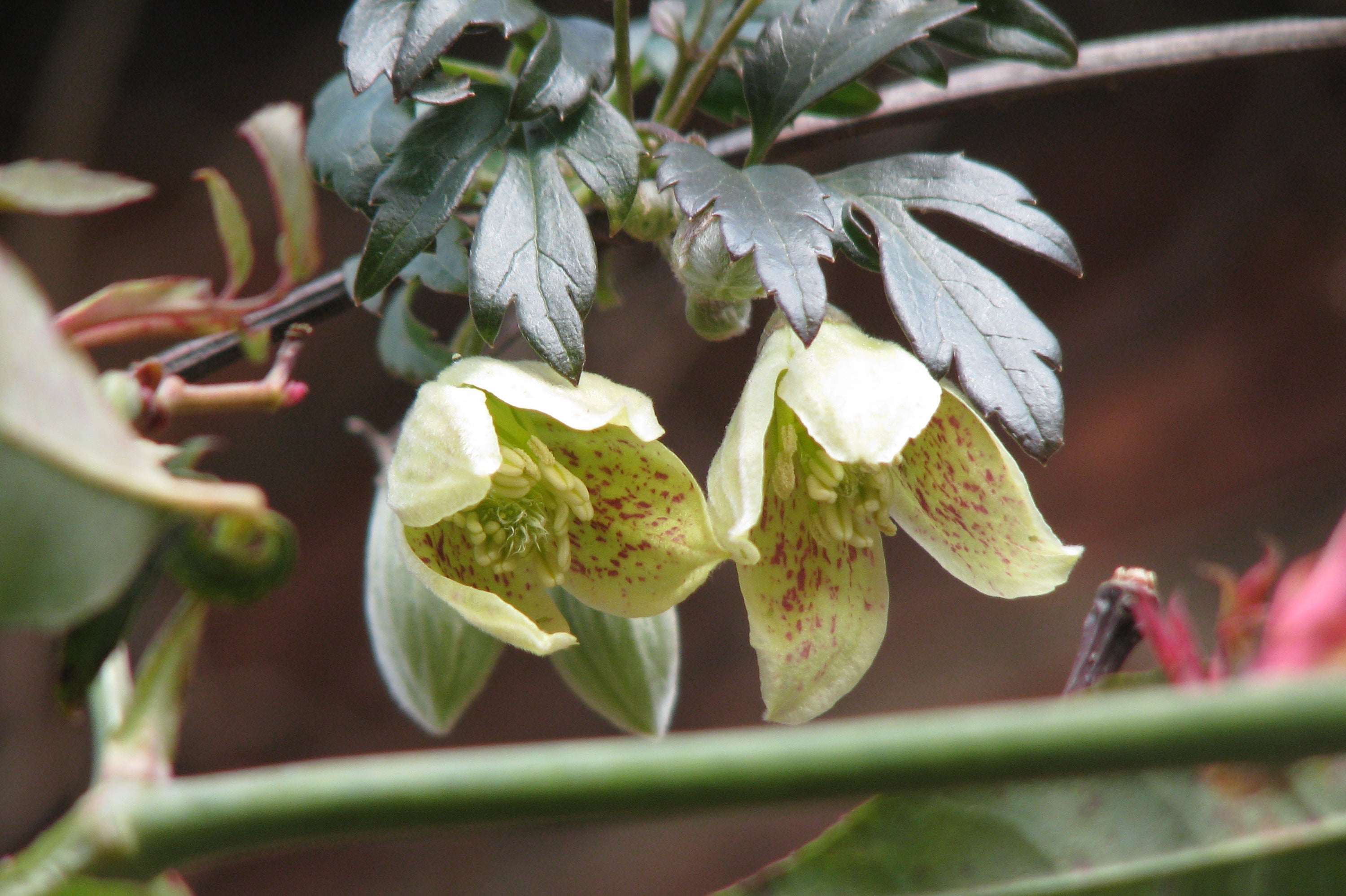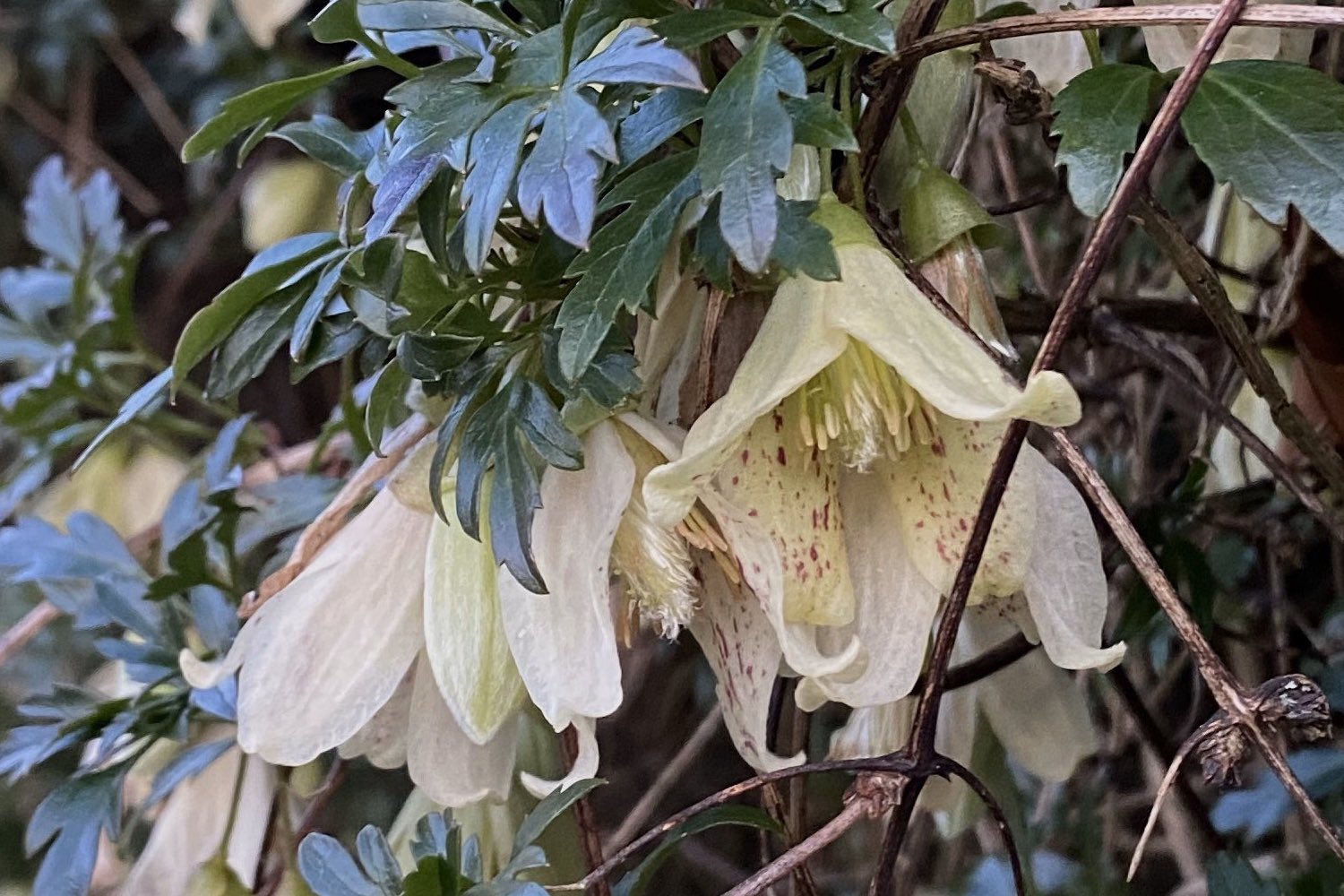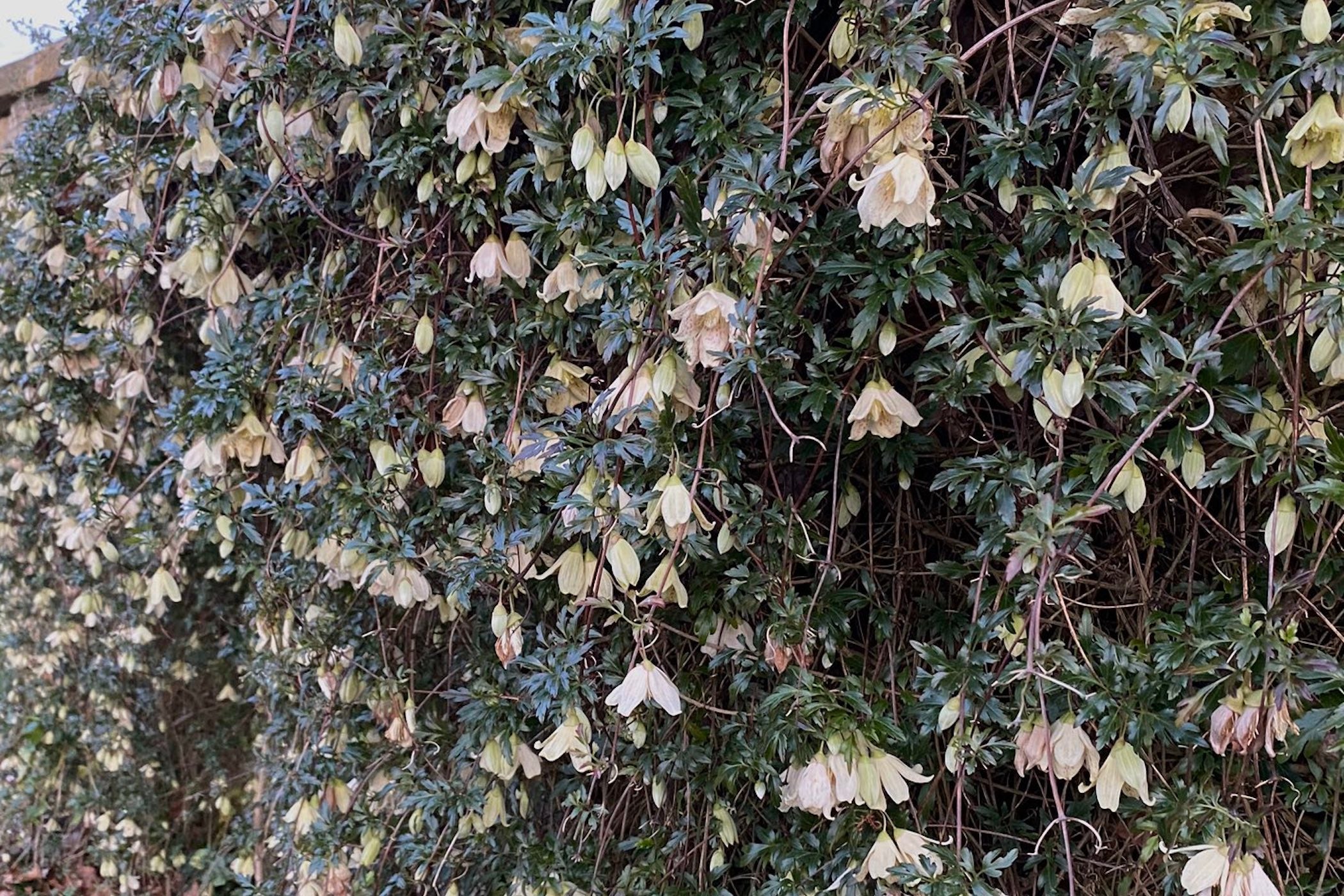Clematis cirrhosa var. balearica
Approx. 0.5 litre pot
About this cultivar:
Clematis cirrhosa var. balearica is a native of the Balearic Isles in the Mediterranean first brought to Kew in 1783, so you often see it in old landed-gentry type gardens. It is an evergreen climber with slightly fragrant, cup-shaped creamy-yellow flowers, spotted purple within. The flowers, produced in late winter and early spring, are followed by fluffy seedheads. It is very similar to the cirrhosa species yet the foliage is more delicate and finely cut. It also turns bronze-purple in winter. In 1912 William Robinson noted that the form is scented and the Illustrated Encyclopedia of Clematis describes it as lemon-scented. The specific epithet cirrhosa means spotted and balearica refers to the Balearic isles.
Being quite fined featured, and given it origins, you would not think it makes much of a winter evergreen. But it does! Well, as long as you have it growing all walls which will retain some heat (eg: your house!). It will likely die off in a hard winter if you don't have it on a wall (say thru a hedge, arch, or a tree). However you can always try away from walls if you think it is worth the risk (it is).
- Position: Full sun, partial shade
- Soil: Almost any soil
- Flowers: December, January, February, March
- Other features: Scented
- Hardiness: H4 - Hardy through most of the UK (-10 to -5°C)
- Habit: Climbing
- Foliage: Evergreen
- Height: 150 - 300 cm (5 - 10 ft)
- Spread: 100 - 180 cm (3.5 - 6 ft)
- Time to full growth: 2 to 5 years
- Plant type: Herbaceous Perennial, climber
- Colour: Yellow, green, white, pink
-
Goes well with: Drainpipes, roses, trees, walls, anything they can climb; even other clematis
About this genus:
Clematis, is one of our favorite genus. But not just ours. William Robinson (1838-1935) said about them ‘As hardy as the British Oak…I believe them to be the finest of all hardy flowers and wish them a pleasant time with their admirers.’ Christopher Lloyd (1921-2006) even started a specialty Clematis nursery within his famous garden at Great Dixter.
Clematis (meaning"a climbing plant" in ancient Greek) is a genus of about 300 species within the buttercup family (Ranunculaceae). Their garden hybrids have been popular among gardeners, beginning with Clematis × jackmanii, a garden standby since 1862. Most species are known as clematis in English, while some are also known as traveller's joy, (a name invented for the sole British native, C. vitalba, by the herbalist John Gerard), virgin's bower, old man's beard, leather flower or vase vine.
Clematis are mainly found throughout the temperate regions of the Northern Hemisphere, rarely in the tropics. The wild Clematis species native to China made their way into Japanese gardens by the 17th century. Japanese garden selections were the first exotic clematises to reach European gardens, in the 18th century.
The climbing varieties are valued for their ability to scramble up walls, fences, and other structures, and also to grow through other plants, such as shrubs and trees. Some can be trained along the ground to provide cover. Because of their adaptability and masses of spectacular flowers, clematis are among the most popular of all garden plants. Because different cultivars flower during different seasons it is, in theory, possible to have a clematis in flower at any time throughout the year.
They will grow in almost any garden soils and situations, many can be grown in containers. They are a great plant for any garden - don't believe they are for informal gardens only. We grow them almost everywhere in Ballyrobert. Try them with drainpipes, shrubs, roses, trees, anything they can climb;even other clematis.
Much confusion surrounds Clematis pruning. We say - don't worry. As mentioned above, Christopher Lloyd had a specialty Clematis nursery. Here is a I-think-relevant 1969 quote of his "[The] gardener’s eternally repeated question “When should I?” and “What’s the best time to?”, I've concluded that nine times out of ten the answer is “When you’re thinking about it; when you’re in the mood.”" Amen to that.








